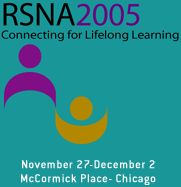
Abstract Archives of the RSNA, 2005
Roger F. Robison, Presenter: Nothing to Disclose
Purpose/Objective: HISTORY Materials/Methods: HISTORY Results: The Sudetenland Moutains separate German Saxony from Czech Bohemia. They have been mined for centuries for everything from lead (1100 A.D.) to silver (1470) to uranium (1789) and radium (1899). In the 15th century, miners were reported to be dying prematurely from a mysterious lung disease (Bergkrankheit). Saxon folklore attributed the deaths to hobglobins who lived underground to protect their buried treasures. The legendary Paracelsus (1493-1541), a metallurgist turned physician, published in 1533 the first text addressing the occupational diseases of miners. However, it was 1879 before the Bergkrankheit was correctly identified as lung cancer and not TB or silicosis. By 1924, radon gas was suspected as the cause. U-238 decays via Th-234, Pa-234, U-234, Th-230, Ra-226, Rn-222, Po-218, Pb-214, Bi-214, Po-214, Pb-210, Bi-210, and Po-210 to Pb-206. Radon-222 is an inert gas but its daughters, Polonium-218 and Po-214, react and lodge in the lungs emitting high energy alpha particles. Lung cancer became a compensable occupational disease for Saxon miners in 1926 and for Czech miners in 1932. In 1939 Nazi Germany officially recognized the radon etiology and the danger. It was 1991 before there was a Radiation Exposure Compensation Act in the USA. Uranium oxide was discovered in the Sudetenland in 1879 but it had only modest commercial value as a coloring agent. The discovery of radium in uranium ore from Joachimsthal, Bohemia, in 1898 led to extensive radium mining there. At the site the Austrians also developed a radium factory (refinery) and a Radium Spa offering radioactive mineral baths and inhalation therapy. J.R. Oppenheimer wrote his prep school thesis on the Joachimsthal mines. Radium mining in the Sudetenland diminished between World Wars I and II, due to the discovery of higher grade uranium ore in the Belgian Congo. However, with the discovery of uranium fission in 1938 and the start of War in 1939, Sudetenland uranium mining assumed new importance in spite of the health hazards. The Nazi military soon occupied all the Sudetenland as well as the Oolen refinery in Belgium. The Nazis had been staunch supporters of improving occupational health standards. Now they further protected German workers by using political prisoners and slave labor to work the radioactive mines for their nuclear weapons program. A two-stage intercontinental ballistic missile ('the New Yorker') containing nuclear waste was planned for launch from silos in France. During 1945-47, German Saxony and Czechoslovakia became puppet states under Soviet rule. The Americans had given up Saxony in exchange for the partition of Soviet-conquered Berlin. After the atomic bombing of Japan, the Anglo-Americans and the Soviets entered into fierce competition to control and exploit the world supply of uranium. The Soviets used German POWs and then political dissidents to work the Sudetenland mines. The Americans hired Mormons and Navahos on the Colorado Plateau. Gradually it was discovered that uranium was not rare but ubiquitous. It occurs in the earth's crust in a ratio of two parts per million: in greater abundance than gold, silver, or mercury. In 1989, the bankrupt Soviets departed Saxony and Czechoslovakia and the Sudetenland mines were flooded. The abandoned Todesschachts (death mines) are now returned to the Hobglobins. Conclusions: HISTORY
Robison, R,
SUDETENLAND HOBGOBLINS: The Daughters of Radon. Radiological Society of North America 2005 Scientific Assembly and Annual Meeting, November 27 - December 2, 2005 ,Chicago IL.
http://archive.rsna.org/2005/4420652.html

